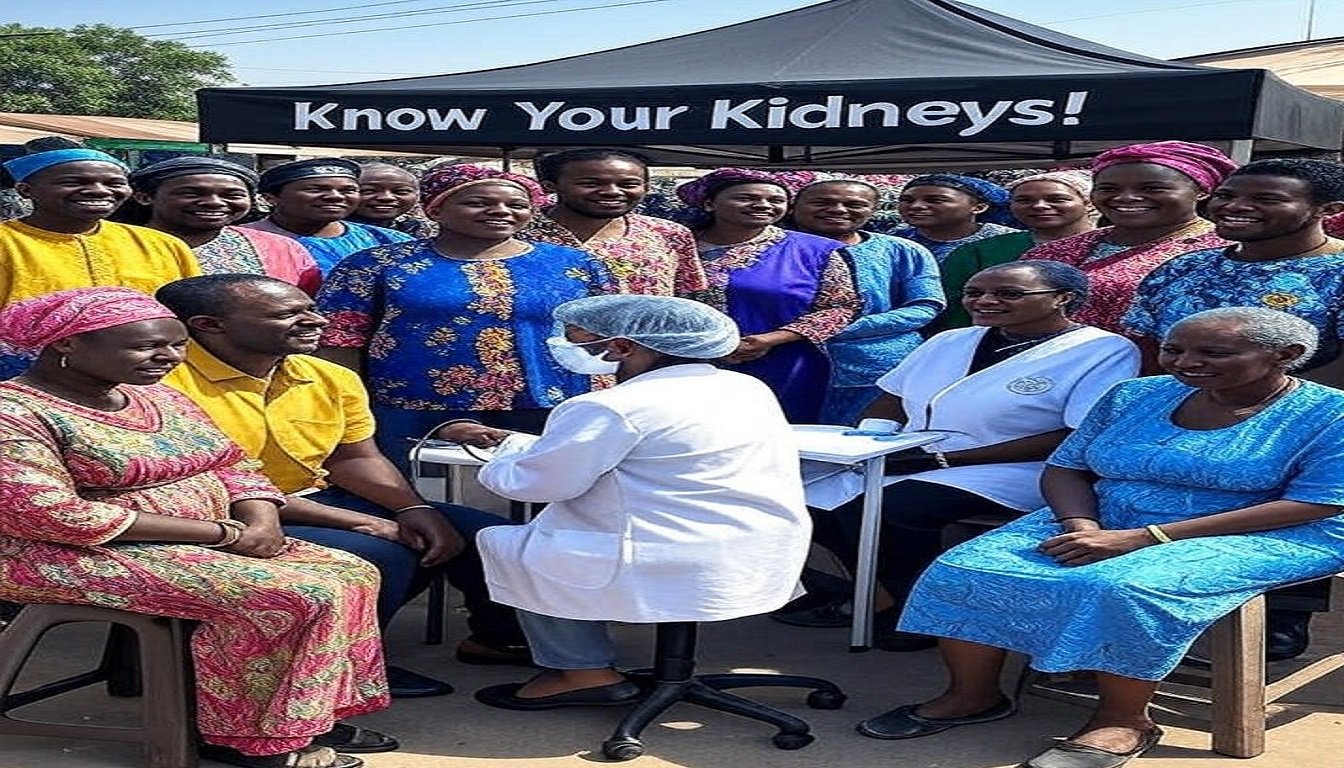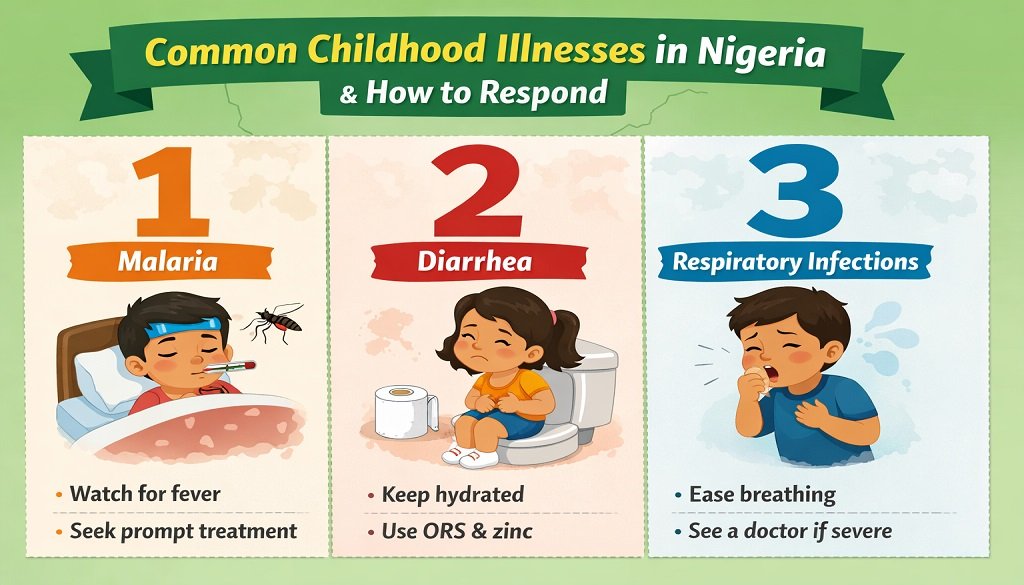
Did you know your kidneys could be failing silently, without you noticing until it’s critical? Chronic kidney disease (CKD) affects over 850 million people globally, with millions more at risk, particularly in regions like Nigeria where diabetes and hypertension are rising (WHO, 2020).
Globally, CKD affects nearly 10% of adults; in Nigeria, prevalence ranges from 1.6% to 12.4% across different regions (ojs.ijcp.in). Because it rarely triggers early symptoms, many Nigerians first learn they have CKD during late-stage complications—making awareness crucial.
This blog post explores CKD’s causes, symptoms, and management, emphasizing local solutions to empower you. By understanding CKD, you can take charge of your kidney health, whether you’re at risk, newly diagnosed, or supporting a loved one. Let’s dive into what causes CKD, how to spot it, and practical ways to manage it effectively, especially with Nigeria’s unique healthcare landscape in mind.
What Is Chronic Kidney Disease?
CKD is defined as abnormalities in kidney structure or function persisting for at least three months, usually indicated by reduced glomerular filtration rate (eGFR < 60 mL/min/1.73 m²) or markers such as elevated albumin in urine .
It is categorized into five stages:
- Stage 1–2: eGFR ≥ 60 with evidence of kidney damage
- Stage 3: Moderate reduction in function (30–59)
- Stage 4: Severe reduction (15–29)
- Stage 5: Kidney failure (eGFR < 15)
KDIGO’s newly released 2024 guidelines provide updated, stage-specific recommendations to delay progression and manage complications (kidney-international.org).
Common Causes of Chronic Kidney Disease
Both international and Nigerian data point to similar major risk factors:
- Hypertension—Nigeria’s most common cause (ojs.ijcp.in, researchgate.net). Hypertension, another major culprit, contributes to 25-30% of CKD cases by straining kidney vessels (CDC, 2023). In Nigeria, 1 in 3 adults has hypertension, often undiagnosed in rural areas (Adeloye et al., 2015).
- Chronic Glomerulonephritis—Responsible for up to 34% of CKD cases locally (researchgate.net). In Nigeria, glomerulonephritis is a significant CKD driver, often linked to infections like hepatitis B, common in sub-Saharan Africa (Akinsola et al., 2004).
- Diabetes Mellitus—Accounts for ~19% of cases in Nigeria. Diabetes, the leading cause globally, accounts for 30-40% of CKD cases, as high blood sugar damages kidney blood vessels (International Diabetes Federation, 2021). In Nigeria, diabetes prevalence has surged to 5.8%, amplifying CKD risk (Akinbodewa et al., 2016).
- Obstructive Nephropathy—Around 10% of local cases (ojs.ijcp.in).
- Other causes: sickle cell nephropathy, HIV nephropathy, interstitial nephritis, CKDu (researchgate.net).
- Secondary factors, such as obesity, smoking, and prolonged use of nonsteroidal anti-inflammatory drugs (NSAIDs) like ibuprofen, also play roles. For instance, NSAID overuse, common in Nigeria for pain relief, can reduce kidney blood flow (Nderitu et al., 2013). Family history, age (over 60), and ethnicity (African descent) further elevate risk. In Nigeria, genetic predispositions like the APOL1 gene variant increase CKD susceptibility among Africans (Kruzel-Davila et al., 2017).Recurrent urinary tract infections and kidney stones, prevalent in areas with poor water quality, also contribute. In rural Nigeria, limited access to clean water exacerbates these risks (Odetunde et al., 2014). By identifying these causes—diabetes, hypertension, infections, and lifestyle factors—you can take proactive steps, like regular screenings, to protect your kidneys.
Signs and Symptoms of CKD
CKD often begins silently until kidney damage is advanced. Typical signs include:
- Persistent fatigue, as kidneys struggle to produce erythropoietin, a hormone for red blood cell production (Kidney Research UK, 2022).
- Swelling (edema) in feet, ankles, or around eyes occurs due to fluid retention, affecting daily tasks like walking
- Foamy urine: Changes in urination—such as foamy urine, frequent nighttime urination, or reduced output—signal kidney dysfunction. In Nigeria, patients often notice foamy urine but delay seeking care due to stigma or cost (Okoye et al., 2018).
- Blood in urine or severe back pain near the kidneys warrants immediate medical attention
- Loss of appetite, nausea, or vomiting
- Hypertension that responds poorly to medications. High blood pressure, a cause and symptom, worsens kidney damage if uncontrolled.
In spite of the above, many patients, especially in early stages, remain asymptomatic, which is why CKD is called a “silent killer” (National Kidney Foundation, 2023). In Nigeria, limited awareness and access to diagnostics mean many cases are detected late, with 70% of patients presenting at stage 4 or 5 (Arogundade et al., 2011).
Imagine struggling to climb stairs due to fatigue or avoiding social events because of swollen feet. These real-life impacts highlight why recognizing symptoms early is crucial. Regular checkups, especially if you have risk factors like diabetes or a family history, can catch CKD before symptoms escalate. If you notice persistent changes, consult a doctor promptly to prevent progression.
Risk Factors For Chronic Kidney Disease
Besides the causes above, risk rises with:
- Age over 50
- Family history of CKD or kidney disease
- Obesity and metabolic syndrome—international studies link higher body mass index to faster CKD progression (researchgate.net, pubmed.ncbi.nlm.nih.gov)
- Use of NSAIDs or unregulated herbal medications
- Genetic predispositions, such as APOL1 variants common among West Africans that increase ESKD risk (arxiv.org)
How CKD Is Diagnosed
CKD screening involves:
- Blood tests for creatinine to calculate eGFR
- Urine albumin-to-creatinine ratio (ACR) to detect protein leakage
- Blood pressure monitoring
- Imaging and biopsy, in certain cases
Nigeria’s primary healthcare system can integrate basic screening into routine visits, using eGFR and urine dipsticks to flag early disease (magnascientiapub.com, kdigo.org). According to a 2024 rural study, training community health workers in CKD risk detection dramatically improved early diagnoses (magnascientiapub.com).
Management of Chronic Kidney Disease
Delaying progression and managing complications involve
Lifestyle Adjustments
- Blood pressure control: ACE inhibitors or ARBs are the preferred first-line drugs, even when blood pressure is normal (kdigo.org).
- Glycemic control: SGLT2 inhibitors (e.g., dapagliflozin) show strong benefits for CKD patients, diabetic or not (en.wikipedia.org). Read also: https://healthsclinic.com/control-diabetes-with-nigerian-food-choices
- Salt restriction: Sodium intake should be limited to < 2,300 mg/day.
- Weight management: Losing weight helps slow kidney function decline (magnascientiapub.com). Read also: https://healthsclinic.com/best-diet-plan-for-weight-loss-and-muscle-gain
- Exercise: Moderate daily activities (30 minutes/day) benefit cardiovascular and kidney health. Read also: https://healthsclinic.com/how-to-exercise-without-a-gym-10-fun-ideas
- Quitting smoking and limiting alcohol are critical, as both harm kidney blood vessels. In Nigeria, where herbal concoctions are common, avoid unverified remedies like “agbo,” which may contain nephrotoxic herbs (Kadiri et al., 2015).
- Staying hydrated with clean water—boiled or filtered in rural areas—prevents urinary infections.
Medication
- ACEi/ARBs for blood pressure and albuminuria
- SGLT2 inhibitors as above
- Phosphate binders, vitamin D analogues, and bicarbonate for bone–mineral disorders, adapted locally based on drug availability (kdigo.org, pmc.ncbi.nlm.nih.gov).
- Anemia management, with erythropoiesis-stimulating agents and iron supplements per KDIGO guidelines
- Facet joint injections, like hyaluronic acid, reduce swelling and pain
Regular monitoring is essential. Blood and urine tests track kidney function (eGFR) and protein levels. In Nigeria, free screening programs, like those by the Nigerian Kidney Foundation, are expanding in urban centers. Partnering with a nephrologist ensures tailored care, though rural access remains limited, prompting mobile clinics in some regions.
Advanced Treatments For Chronic Kidney Disease
Dialysis and Transplant
- Hemodialysis: Widely used but often unaffordable for many Nigerians. A 2013 study showed only ~59% of ESRD patients could pay out of pocket (ojs.ijcp.in).
- Peritoneal dialysis: Underused, despite being more cost-effective and home-based—Nigeria should promote it more .
- Kidney transplant: Viable for those with access, but challenges include donor shortage and funding.
For stage 5 CKD, dialysis or transplantation is necessary. Hemodialysis, available in cities like Abuja and Lagos, filters blood artificially. Peritoneal dialysis, using the abdominal lining, is less common but growing in private hospitals. Kidney transplantation, though rare in Nigeria due to cost and donor shortages, is performed at centers like St. Nicholas Hospital, Lagos. Post-transplant, immunosuppressive drugs prevent rejection, but high costs (₦5-10 million) limit access (Bamgboye, 2017).
Nigerian Diet Tips for Kidney Health
Implementing a kidney-friendly diet can considerably slow CKD progression.
- Control protein intake: Adopt moderate amounts (e.g., 0.6–0.8 g/kg), choosing local plant proteins like beans and legumes .
- Limit sodium: Traditional high-salt condiments (stock cubes, bouillon) should be used sparingly. Read also: https://healthsclinic.com/lower-blood-pressure-naturally-5-tips-for-africans
- Reduce potassium and phosphorus: Limit bananas, plantains, yams, cassava (high in potassium); curb intake of kola nuts and kola-based drinks (high in phosphorus).
- Emphasize local kidney-friendly foods:
- Ugu (pumpkin leaves), waterleaf, and efo-riro offer nutrients with moderate potassium.
- Plantain porridge (without added salt) – low phosphorus and sodium.
- Millet and sorghum-based foods (e.g., tuwo) provide healthy alternatives
- Adequate fluids: Drink enough water without overloading—especially in advanced stages. Read also: https://healthsclinic.com/the-lifeline-of-hydration-drinking-more-water-daily
- Avoid herbal mixtures: Unregulated herbal concoctions (e.g., agbo) can worsen kidney damage; instead, use scientifically studied alternatives
Can Chronic Kidney Disease Be Prevented?

Yes—with proactive measures:
- Routine screening: Annual checks for diabetics, hypertensives, and older adults.
- Health worker training: Nigeria’s primary health workforce should learn early CKD detection (sciencedirect.com, arxiv.org).
- Public awareness: Educational campaigns in local languages to discourage NSAID/herbal misuse.
- Policy actions: Subsidize essential CKD medications; integrate CKD into national health insurance.
- Collaboration: Encourage partnerships between nephrology associations, NGOs, and government agencies
Living with CKD
A Nigerian’s Chronic Kidney Disease Story
Mrs. Aniekon, a 52‑year‑old market trader from Abuja, developed stage 3 CKD after 5 years with hypertension. She joined a free screening program that offered regular eGFR checks, dietary counseling incorporating local foods (ogbono soup with more vegetables, less salt), and affordable ACE inhibitors via a subsidy scheme. Two years later, her eGFR has stabilized, and she no longer requires dialysis. This shows that combining early detection with culturally adapted management can make a real difference
Practical Tips For Chronic Kidney Disease
Track symptoms using a notebook or mobile app to share with your doctor. Adhere to medication schedules, using reminders if needed. Join local support groups, like those organized by the Kidney Foundation Nigeria, for emotional support. In rural areas, community health workers can link you to nearby clinics. Mental health matters—counseling or peer groups reduce stress, which can worsen CKD.
Local Solutions For CKD
Nigeria’s healthcare challenges, like high costs and limited rural access, necessitate creative solutions. Community-based screening programs, such as those in Kano, detect CKD early. Mobile dialysis units are emerging in some states, offering affordable sessions (₦20,000-50,000 per session). Government subsidies and NGOs like the Tony May Foundation provide free or low-cost medications. Traditional diets, incorporating low-sodium soups like egusi, support kidney health when prepared thoughtfully.
Final Thoughts
Chronic kidney disease is a looming public health challenge—but it is preventable, treatable, and manageable, especially through culturally relevant, locally tailored interventions.
You can:
- Ask for annual CKD screenings if you have diabetes, hypertension, or a family history
- Promote kidney‑friendly cooking styles in your home and community
- Advocate for better local kidney care policies and funding
By working together—patients, clinicians, communities, and policymakers—we can significantly reduce CKD’s impact in Nigeria and beyond
Let us know what steps you plan to take this week to protect your kidneys. Comment and pass on the message.
This post is for educational purposes only: therefore, consult your doctor before making any medical decisions.
Related Reading
RELATED POSTS
View all



